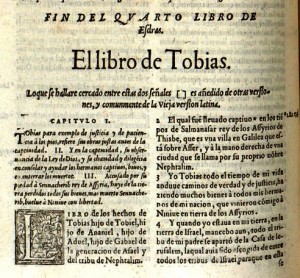Second Temple Literature and Rabbinic Judaism: Introduction
 One of the central issues of the history of Judaism is the periodization of its early history. Behind this issue lurks a much more central question: to what extent may we trace continuity between the various bodies of Jewish literature and religious ideas that they embody? When we study the development of Judaism from the late books of the Hebrew Bible, through the texts of the second Temple period, into rabbinic literature, to what extent do we observe continuity and to what extent do we see change?
One of the central issues of the history of Judaism is the periodization of its early history. Behind this issue lurks a much more central question: to what extent may we trace continuity between the various bodies of Jewish literature and religious ideas that they embody? When we study the development of Judaism from the late books of the Hebrew Bible, through the texts of the second Temple period, into rabbinic literature, to what extent do we observe continuity and to what extent do we see change?
This question is made more complex by the variegated nature of second Temple Judaism, to the extent that some would prefer to use the designation “Judaisms.” So we deal not only with the vertical, axis of historical change, but also with the horizontal axis of competing approaches to Judaism at various times–a phenomenon best documented and understood for the Hasmonean period but no doubt also present at other times as well. Within this complex framework, we seek to ask how the Judaism of the various second Temple period sects, Apocrypha, pseudepigrapha, Josephus and Dead Sea Scrolls, relate to the Judaism of the Mishnah, Talmud and midrash–the rabbinic or Talmudic tradition. What has been continued, and what has been changed; what is old and what is new?
To a great extent this question is complicated by a related issue. In the transition from the period of the Hebrew Scriptures into second Temple times, the earlier period bequeathed a massive literary legacy to the subsequent history of Judaism–the Hebrew Bible. This religious, literary and historical legacy remains a permanent, indeed formative ingredient in all subsequent Jewish development. Yet although second Temple Judaism passed the Bible on to the rabbinic tradition, it did not pass on its own literary productions. We can speak of only one text from the second Temple period as being in the hands of the Talmudic rabbis in its entirety, Ben Sira. Beyond that, they did not have or perhaps did not want to read, the Dead Sea Scrolls, Apocrypha and pseudepigrapha, nor the works of Josephus. This hiatus in culture, indeed an abyss from a literary point of view, remains unexplained. While it appears on the surface to be a radically different development from the transition from the biblical period to second Temple times, when the corpus of Scripture was passed on, however, the difference is not total. In fact, some 22 or so books are mentioned in the Hebrew Bible that did not survive into later periods. They were not accepted into the canon that was apparently the sole means by which books traveled from biblical to second Temple times. It is still the case that the fact that virtually nothing passed from second Temple times to the Talmudic era is in stark contrast with the large body of biblical literature that was transmitted into second Temple Judaism.
If there was no direct literary influence, as seems to be a case, we will have to content ourselves with seeking common ideas and approaches that were passed down as part of a general religious ambiance. This is also the case because the halakhic and theological forebears of the rabbis were the Pharisees, and so we have to expect that rabbinic literature and rabbinic Judaism are dependent primarily on the Pharisaic teachings. But here evidence points to no existing written texts, except for written notebooks of halakhic and aggadic literature.
This situation is most probably the result of the penchant for oral tradition associated in the Dead Sea Scrolls, Josephus and later rabbinic literature with the approach of the Pharisees, even if the ideological notion of oral revelation and transmission is actually stated only in the tannaitic period.
At the same time, we can never rule out the possibility of the loss of putative Pharisaic texts that lost popularity as oral tradition dominated Pharisaic Judaism. Further, such texts would not have been preserved in the Qumran sectarian collection, especially as the sect was so anti-Pharisaic. But in any case, the Pharisees bequeathed no literary materials, only apparently extensive oral traditions, to the Talmudic enterprise. It is possible that as Pharisaic Judaism emerged as the only real survivors of the second Temple period, the influence of the other books, were ignored or suppressed, under the category of ספרים חיצוניים, “outside (apocryphal) books.”

Leave a Reply